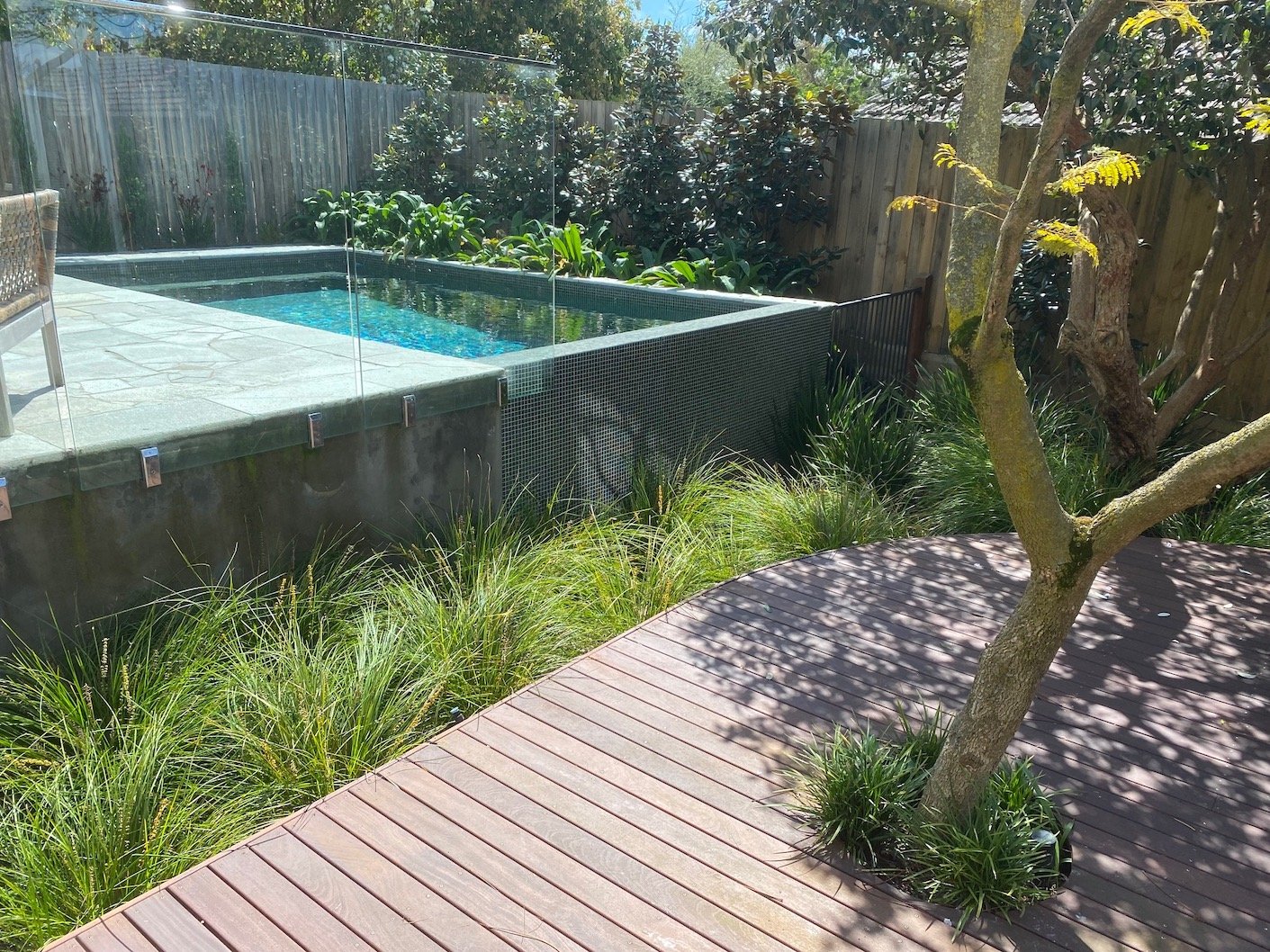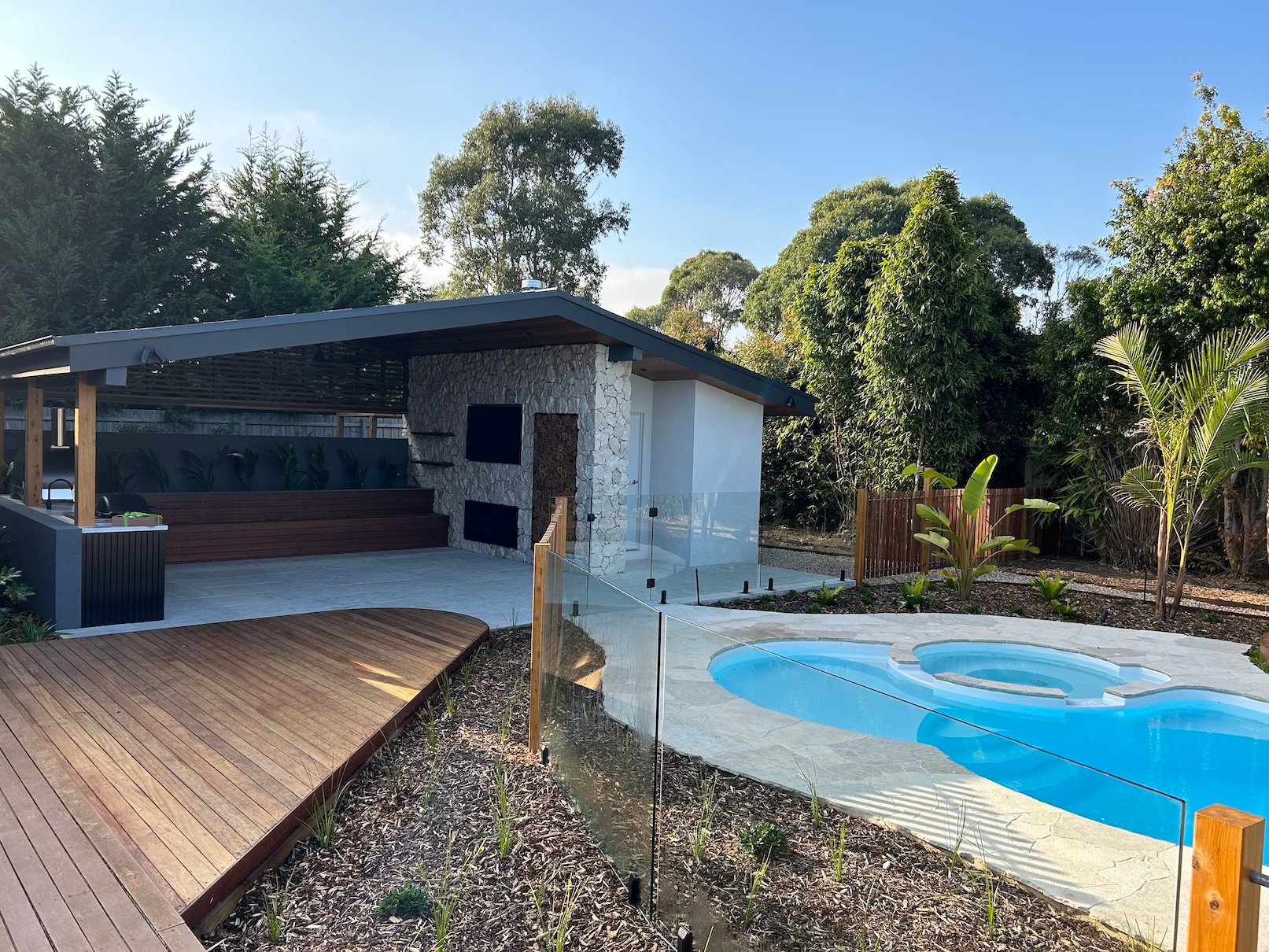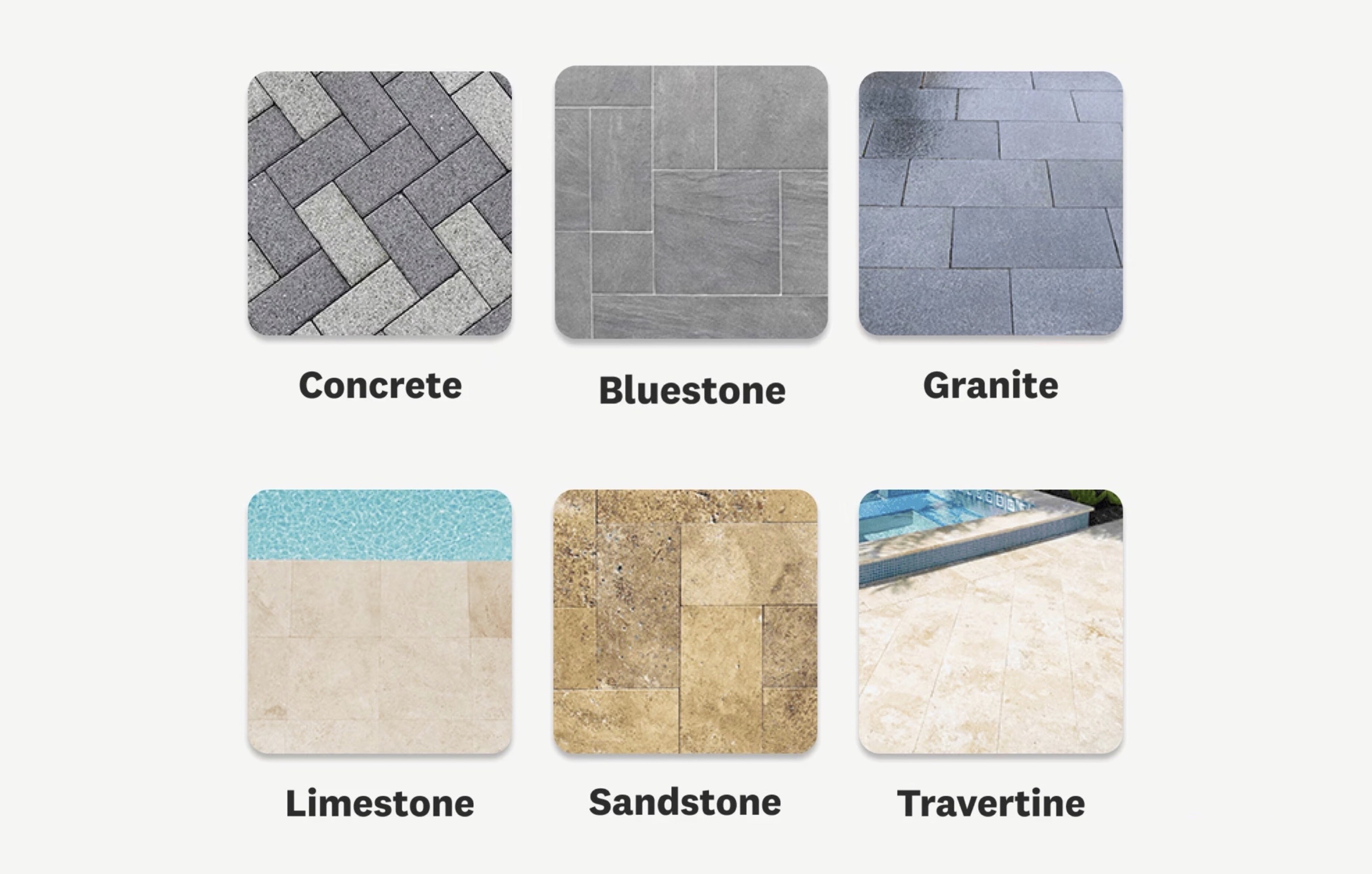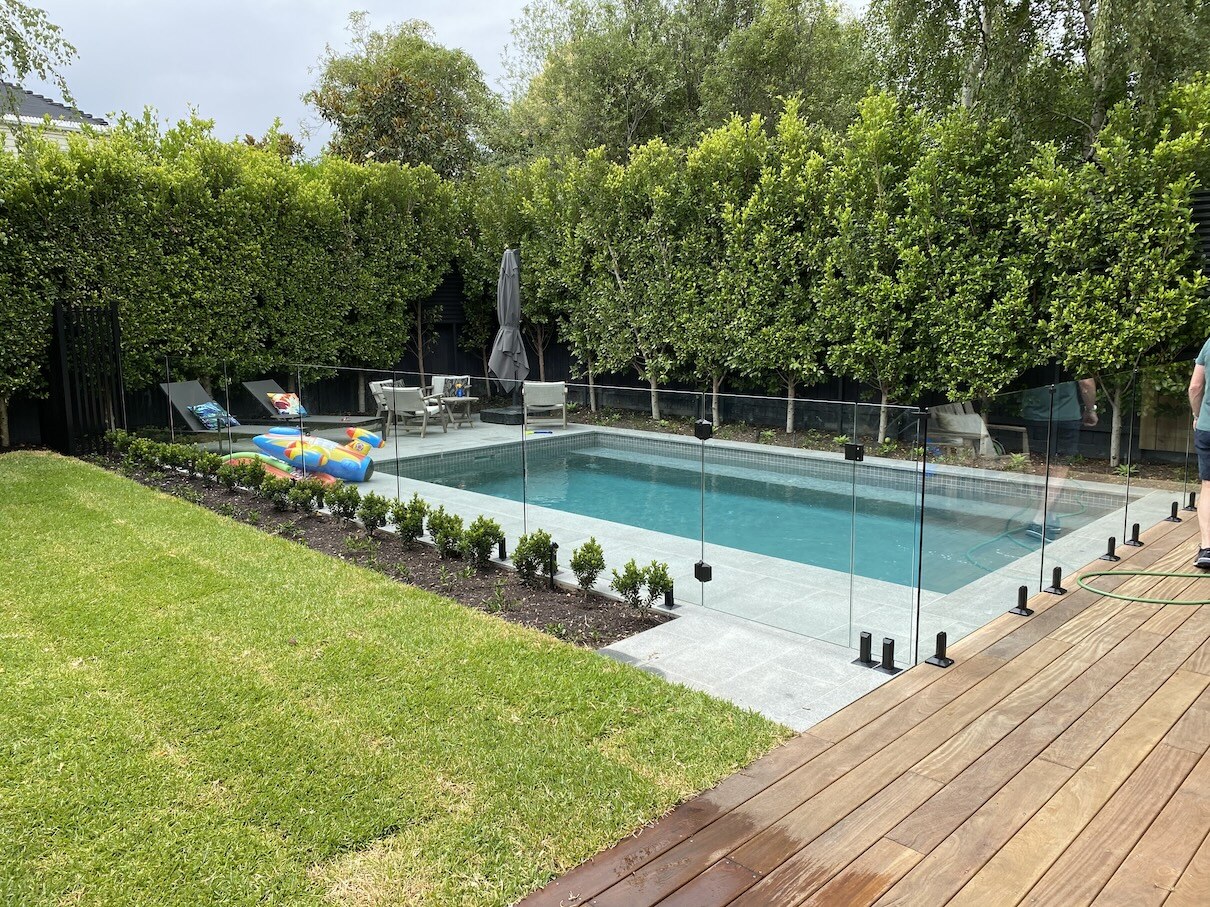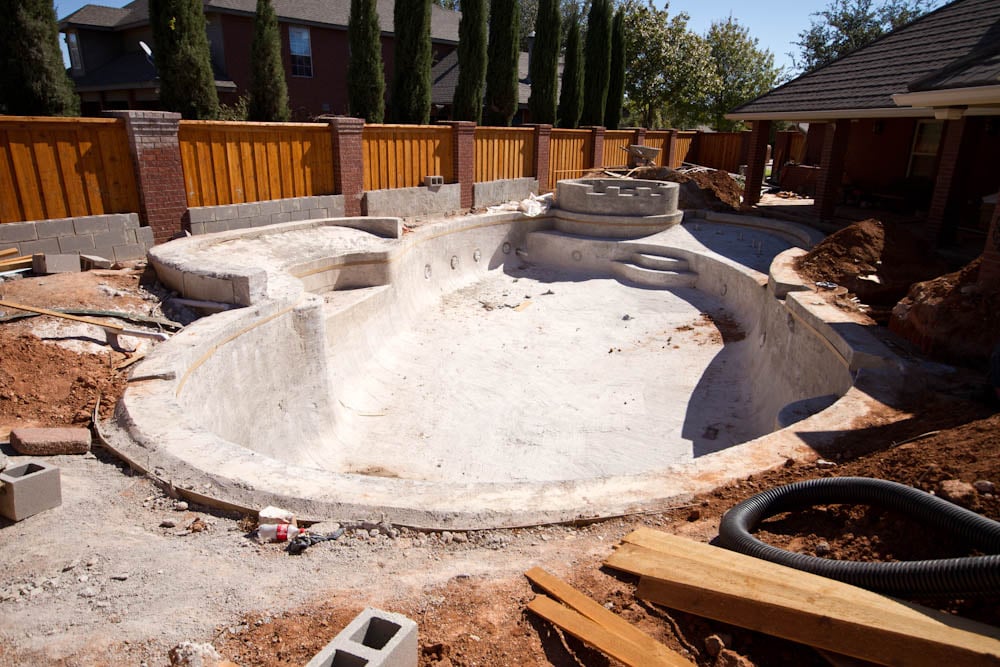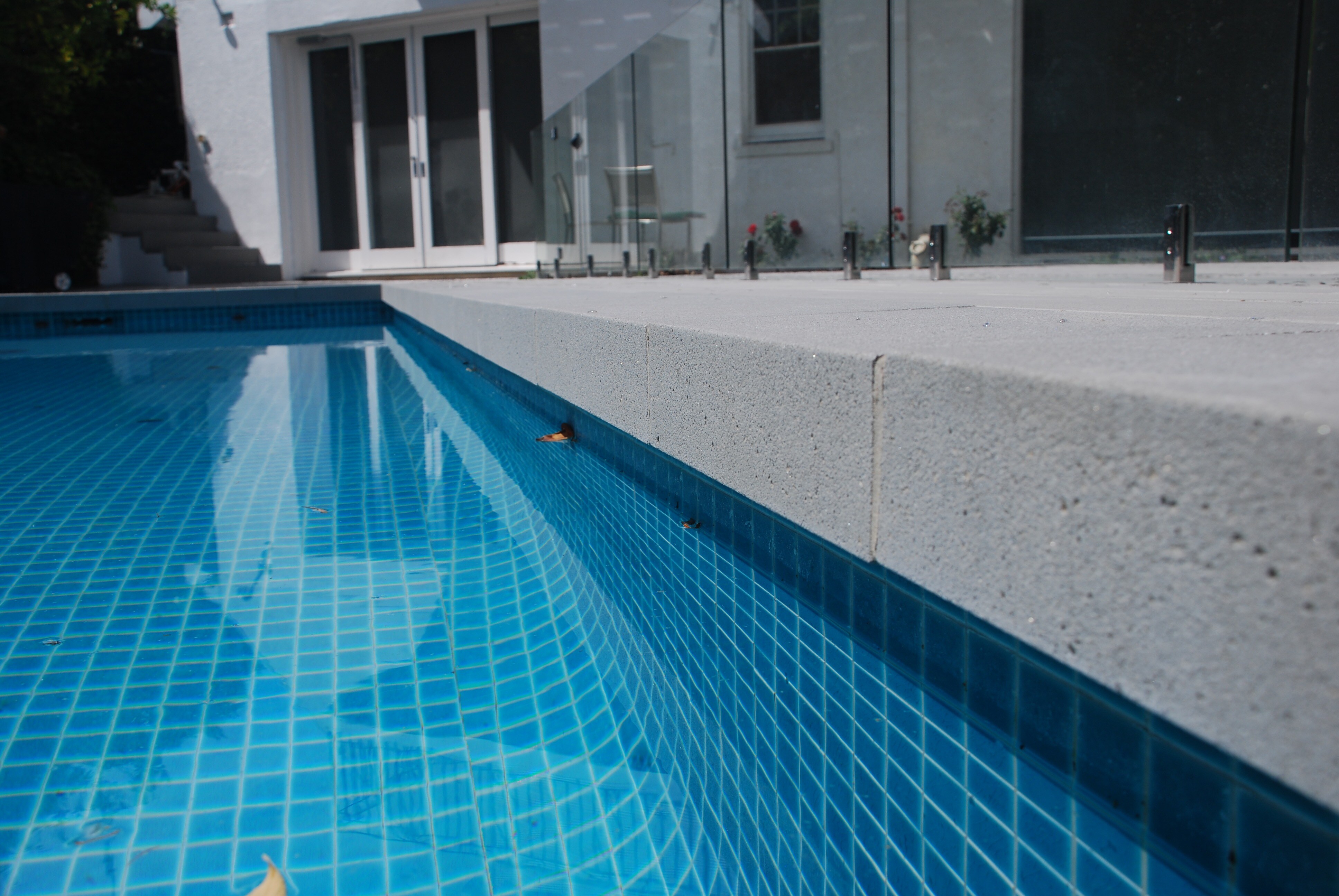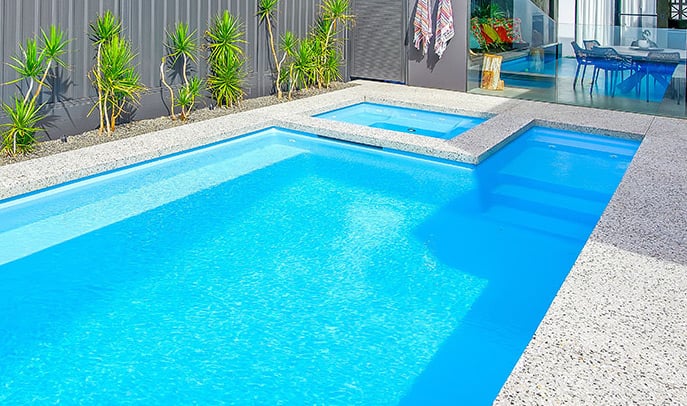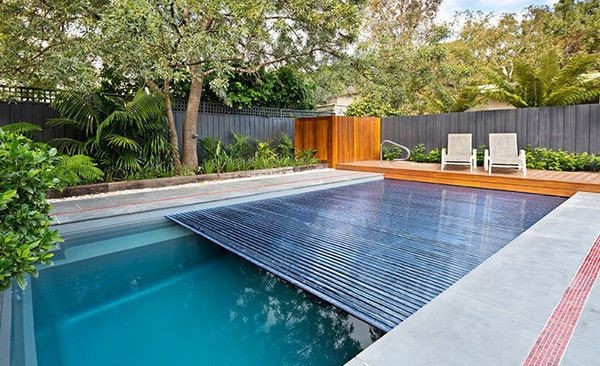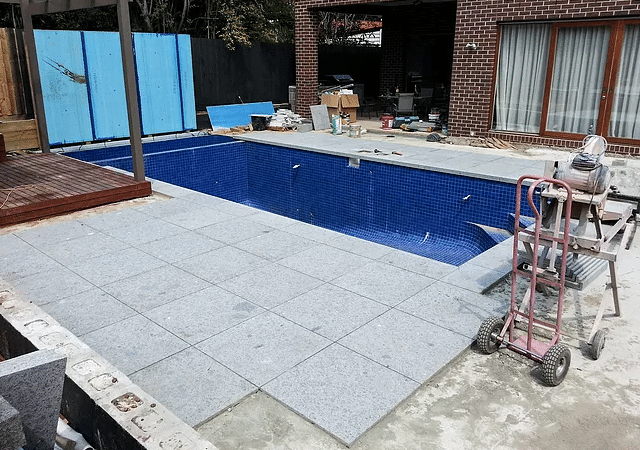Which is better in Melbourne - a fibreglass or concrete pool?
February 9th, 2024
6 min read
By Andrew Whyte
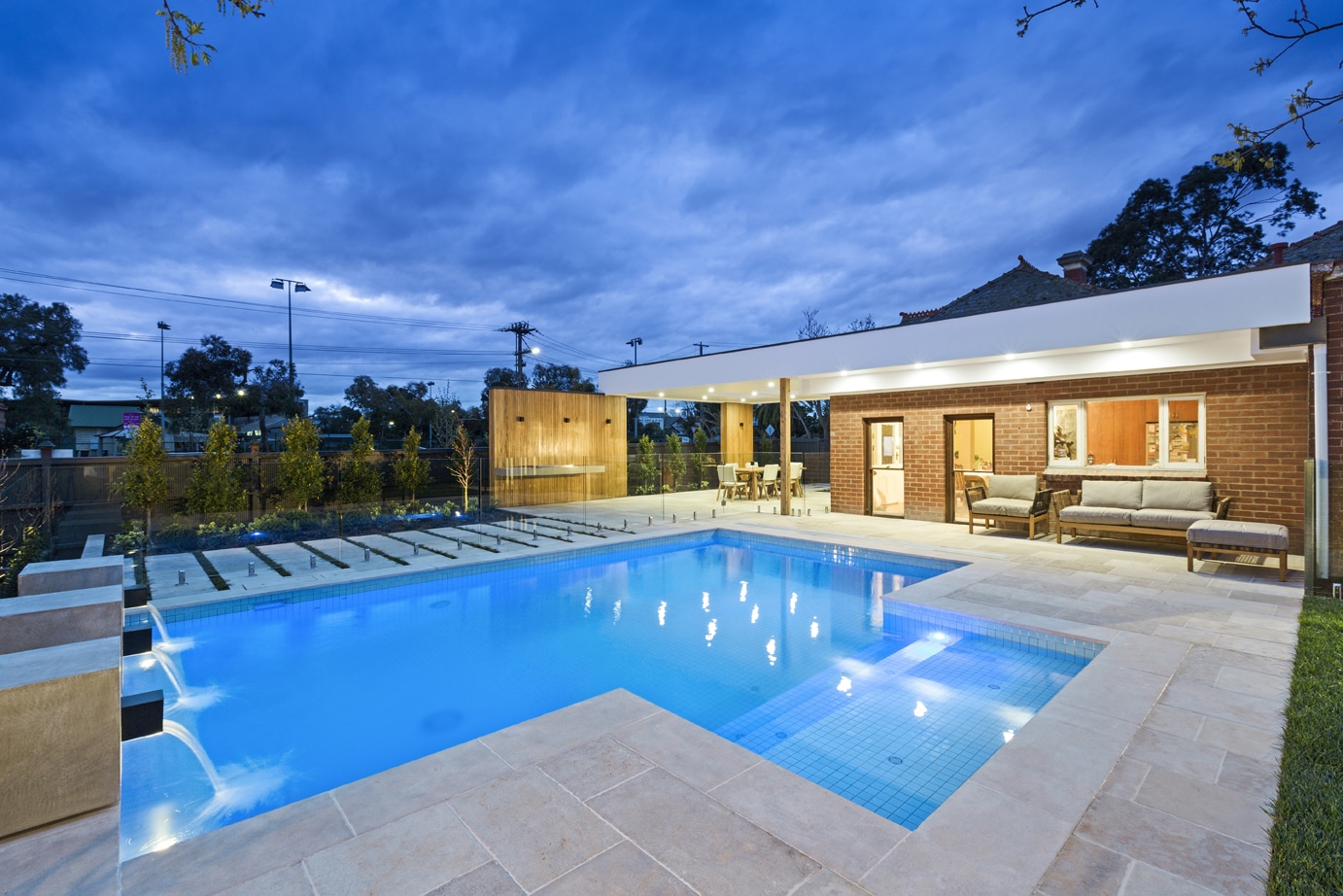
We love our pools in Australia. It’s everyone’s dream to have a swimming pool in their own backyard. But pools have evolved a lot in the past 20 years. So you might be a little unsure about which is the best type of pool for you especially if you live in Melbourne or down on the Mornington Peninsula.
Have you been looking at different types of pools? Are you unsure about whether to go with a fibreglass or concrete pool? Are you wondering about costs, ongoing maintenance, etc?
We hope by the time you’ve reached the end of this article that you clearly understand the differences between fibreglass and concrete pools and the pros and cons of each. We want you to feel more confident about making an informed choice.
As a leading Landscape Design company we’ve been closely involved in installing both fibreglass and concrete pools for our clients all over Melbourne & the Mornington Peninsula during the past 30 years. We work very closely with swimming pool companies throughout the process of designing and creating a new garden, so we understand the benefits and disadvantages of each type of pool.
However, because we don’t actually sell swimming pools our advice is completely unbiased. If you talk to a fibreglass pool company they will try to sell you their product (as they should). If you talk to a concrete pool company they will try to sell you theirs. We however, have no agenda to push so we can give you the most objective and unbiased advice.
Fibreglass vs concrete swimming pools
There’s no doubt that the two most popular types of inground swimming pools in Melbourne today are fibreglass and concrete. So if you are comparing these two you are starting at the right place.
(If you’re considering an above-ground pool that’s a whole different story and we recommend you read this article Best Above Ground Pool Designs)
When reviewing fibreglass versus concrete pools you need to consider the following:
- Overall cost
- Cost of installation
- Cost of maintenance
- Speed of installation
- Ease of installation
- Ease of use/enjoyment
- Customisation
- Longevity
- Eco-friendliness
- Any other factors
What’s the easiest pool to install?
For sheer speed of installation, there’s no doubt that a fibreglass pool wins hands-down. A fibreglass pool is already manufactured off-site and delivered to your home essentially ready to be put into the ground. Whereas a concrete pool is fully constructed on-site.
If you have already dug the hole for your pool then the installation of a fibreglass pool might only take a few days. A concrete pool however might take a few weeks to be finished. First, the hole has to be fairly perfectly shaped, then the concrete has to be poured and left to cure for a week or more. Then, if you’re getting your pool tiled, which most people do, all the tiling work has to be done.
With a fibreglass pool, the pool is installed essentially finished. There is no real work to be done on the internal surface of the pool – it’s ready to be filled with water. Then the soil around it needs to be backfilled into the hole and it’s ready for the final stages.
Once your fibreglass or concrete pool is fully installed, you still have to connect the pumps, filtration equipment, lighting, etc. This will tend to take a similar amount of time for each type of pool.
Remember if you have bad weather during your pool installation this will add time to the process. Generally, this will add more time to a concrete pool installation than a fibreglass one.
Which is the cheapest pool to install?
A fibreglass pool is definitely cheaper to install than a concrete one. Again, this is because a fibreglass pool is prefabricated but a concrete one is effectively made on-site.
A concrete pool can be up to or over 30% more expensive than a fibreglass one. But of course, a concrete pool is much sturdier than a fibreglass one and expectations are that it should last longer.
However one issue with a concrete pool is that it can be unstable if the soil in your area is unstable. Because a concrete pool is so heavy, there can be issues if the soil has not been compacted enough or is slipping on one side. In such cases, a concrete pool could start to sink or even crack.
Remember both types of pools hold a massive amount of water that could weigh 25-30 tonnes or more.
Which pool type is the most expensive to maintain?
Overall, your ongoing maintenance costs for a fibreglass pool tend to be cheaper than a concrete pool. This is because they are coated with a hi-tech smooth, non-porous coating, which tends to inhibit mould and algae growth. This should reduce the amount of pool cleaning and chemicals required for cleaning, like Chlorine. This in turn should reduce your energy consumption for your filter as well.
On the other hand, a concrete pool generally requires more chemicals to keep the water clean as algae tends to be drawn to its concrete walls and floor. It will also require more brushing. Also, you will probably need to resurface your concrete pool walls about every 8 – 10 years or at least do an acid wash to strip the outer layer of the pool walls.
Which pool type allows more customisation?
When it comes to customising your pool to your personal needs, a concrete pool wins by far.
With a fibreglass pool, you are limited by whatever range of pre-designed shapes, sizes and colours the pool company has on offer. You can’t change or re-design any of these aspects of the pool to your own liking, as you can with a concrete pool. No fibreglass pool company is ever going to manufacture a one-off pool to your individual specifications because it’s just too expensive.
Fibreglass pools are also limited in size by what can be transported to your site on a truck and what can be lifted into your property, usually by a crane. But in theory, you could design and create a concrete pool of any size or shape on your own property. You can also easily change the colour of your concrete pool by changing the interior texture, colour, or materials.
All of the additional elements of a concrete pool can be customised to your individual tastes and desires on-site. For example, with a concrete pool, you can add a spa to whichever side or end of the pool you like. You can also customise the tanning ledges or steps to your own needs or the needs of the location. With a fibreglass pool, all these additional elements are built into the pool when it arrives and cannot be changed.
Which type of pool is more enjoyable to swim in?
Some people say they enjoy swimming in a fibreglass pool more because the finish is often smoother to the touch. The corners of the pool and where the sides meet the bottom, all tend to be rounded in a fibreglass pool. In a concrete pool however, the joins are often square and flush.
Generally, the water in a fibreglass pool will stay warmer for longer as it retains heat better.
What’s NOT different about them?
When installing a swimming pool, you will usually need to have substantial landscape works done around the pool to enhance your enjoyment of it.
Aside from the cost of buying and installing the pool, which can differ considerably between fibreglass and concrete, the difference between all the other costs should be similar.
In theory, if you installed a similar shaped pool of the same size, the landscaping works such as decking, paving, coping, etc around it, should not differ greatly between a concrete or fibreglass pool.
Pros and cons of Fibreglass Pools
Pros
- Quicker to install
- Easier maintenance over the long term
- Built-in spas, tanning ledges, steps, etc
- A more modern, streamlined look
- Retains warmth better
- Smoother, more rounded surfaces can make swimming more pleasurable
Cons
- Limited range of standard sizes
- Shapes limited by pool manufacturer
- Cannot change the interior pool colour
- Larger pool sizes are not possible
Pros and cons of Concrete Pools
Pros
- Very solid and structurally sound for a longer life
- Can be fully customised to your requirements
- Size and shape can be individually tailored to your needs
- A wide range of finishes and colours are available
- Tend to look more prestigious
Cons
- More expensive to purchase and install
- Much longer installation time/process
- Unsuitable for all soil types
- More expensive to maintain
- Harder to clean as surfaces attract more mould & bacteria
- Tiled linings are not as smooth as fibreglass
Ultimately the choice between fibreglass and concrete comes down to a few key points.
If your budget is limited, then a fibreglass pool is more affordable and will be installed quicker.
If money is not your main issue and you really want a very specific pool, customised for your exact needs, you can only get this freedom of choice with a concrete pool.
An easier choice - your landscape designer
While you may find you have to agonise over your choice of swimming pools, know that your choice of landscape designers will be much easier. At Whyte Gardens we are 'pool neutral'. We are happy to answer any questions you have about swimming pools but we have no vested interest in pushing one particular type of pool over another.
Over the years we have worked with some of Australia’s top swimming pool companies and have incorporated both fibreglass pools and concrete pools in our garden designs.
We are happy to work with any pool company and will coordinate all our activities to align with your chosen pool installer to ensure everything goes smoothly.
Related articles on landscaping with swimming pools in Melbourne
How to avoid costly mistakes when installing a pool
Pool Coping: What is the right style for your project?
Integrating Your Pool into Your Landscape: A Comprehensive Guide
Founder of Whyte Gardens
Topics:

